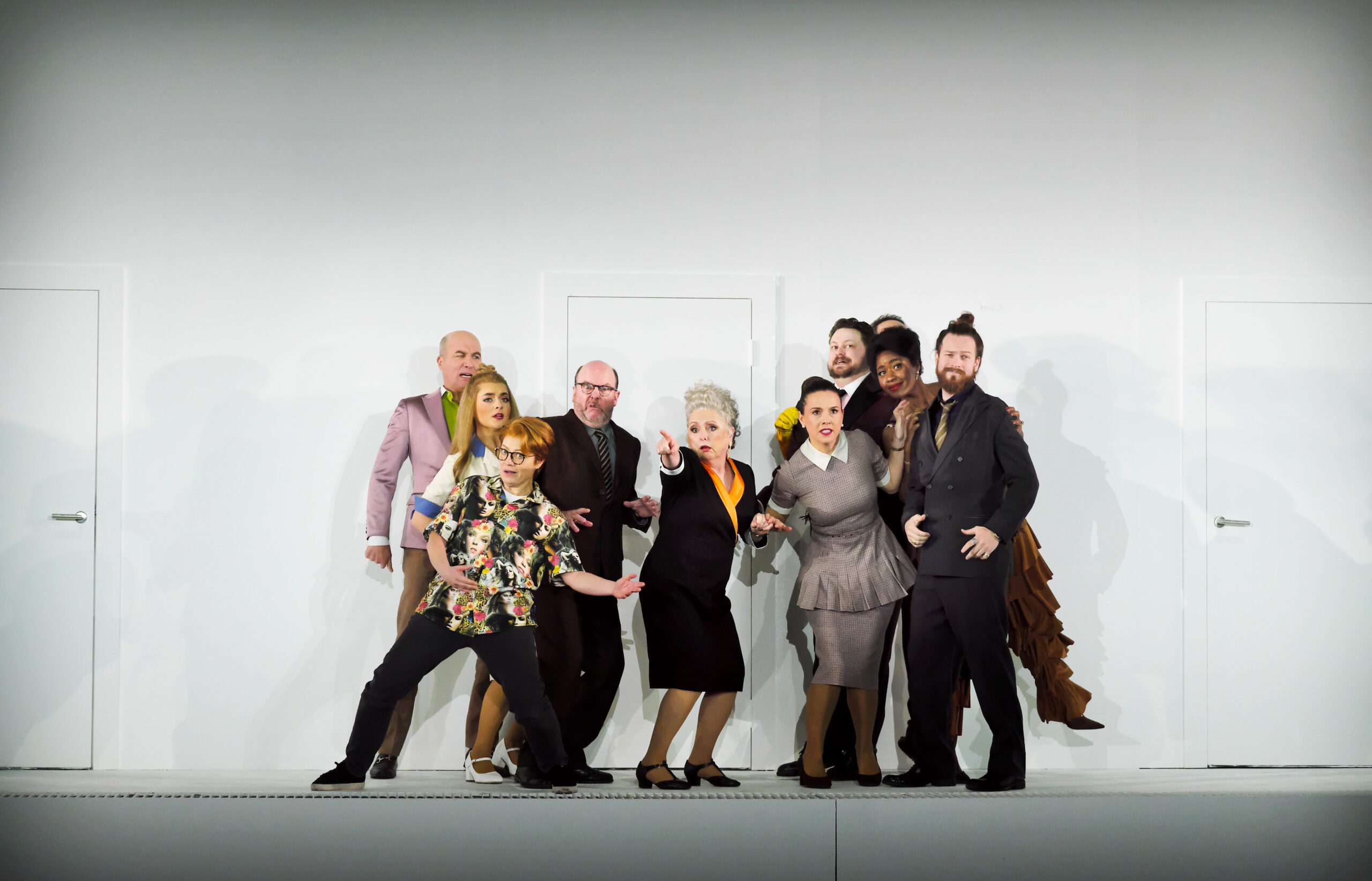Mozart’s The Marriage of Figaro (Le nozze di Figaro), first performed in 1786, is one of the most beloved operas in the repertoire. With a libretto by Lorenzo Da Ponte, based on Beaumarchais’ play, the opera was a daring social satire for its time—critiquing class divisions while delivering a mix of comedy, romance, and emotional depth. Over the centuries, Figaro has remained a staple, admired for its intricate music, fast-paced plot, and profound exploration of human relationships.
Currently playing at the English National Opera (ENO) under the direction of Joe Hill-Gibbins, this new production takes a modern approach, leaning into the farcical elements of the story. Stripping the opera of its traditional period setting, it presents a minimalist aesthetic and amplifies the screwball energy of the plot. While this creates an entertaining, high-energy performance, the production’s heavy emphasis on comedy comes at the cost of some of the opera’s emotional weight.
The opera follows Figaro and Susanna, servants to Count Almaviva, on their wedding day. However, their path to marriage is far from smooth—Count Almaviva, unhappy in his own marriage, tries to seduce Susanna, despite his wife, the Countess, longing to restore their love. With schemes, disguises, and mistaken identities, the story unravels as servants outwit their masters, and love is tested. By the end, after a series of comic yet poignant misunderstandings, the Count is forced to beg for forgiveness, and harmony is seemingly restored.
Visually, the production relies on a minimal but dynamic set. Doors play a central role, cleverly allowing characters to appear, disappear, and eavesdrop—reinforcing the farcical nature of the opera. The way the stage moves, particularly the rising platform, adds a layer of energy to the production, keeping the action flowing. The chorus is well-integrated into the staging, contributing to the lively atmosphere. However, the final scene feels oddly bare—perhaps an intentional decision to match the emotional tone.
As with all ENO productions, this Figaro is performed in English, with a translation by Jeremy Sams. While clear, some of the lines feel out of place, losing the poetic flow of the original Italian. The Coliseum’s acoustics, always a challenge, mean that singers must project without microphones. Some handled this well, while others struggled against the full orchestra. At times, the music had to be dialled back to avoid overpowering the voices. This was frustrating, as Mozart’s passionate score deserves to be played at full intensity—some of its most emotional moments felt restrained instead of soaring.
Mary Bevan’s Susanna had great stage presence, while Cody Quattlebaum and Nardus Williams impressed vocally as the Count and Countess. However, their dynamic with the servants felt oddly informal.
Perhaps the most defining feature of this production is its emphasis on humour. Figaro has always had comedic elements, but here, they are amplified to the point where the opera almost feels like a pantomime. The heartbreak, betrayal, and deeper emotional currents—so beautifully written into Mozart’s music—don’t resonate as strongly. While the audience is entertained, the opera’s full dramatic potential is left unrealised.
Ultimately, ENO’s Marriage of Figaro is a clever, energetic take on Mozart’s classic, with strong performances and inventive staging. While the emphasis on comedy at times overshadows the opera’s emotional depth, the production remains engaging and well-executed.
Running time: 3 hours 10 mins (including interval)
Venue: English National Opera (ENO)

